Recollections of the Past 30 years pursuing Coelacanths
Jerome Hamlin, creator dinofish.com
The dinofish.com site remained active and was particularly helped during this period with information coming in from Rik Nulens and Mahmoud Aboud, who was then the Comoro's Ambassador to China. I hadn't heard from Said Ahamada in several years.
In November, 2018, I recieved an email from Richard Pyle, a noted ichthyologist and technical research diver at the Bishop Museum in Hawaii. His speciality is using rebreather diving gear to explore the mesophotic zone of reefs, that is the depths below the recreational SCUBA diving limit of roughly 200ft, on down to 500ft, (30/40-150m) the depth at which submersibles become more practical. Using this technique, Richard and his diving partners, very often Brian Greene, cameraman Rob Whitton, John Earle, and Josh Copus had found, sampled, and documented a number of new species of fish. They were planning an expedition to the Solomon Islands for the next fall that would include not only this work, but reef surveys, and nautilus trapping and sampling. Would I be interested in coming, just on the long shot that coelacanths might be found as per my previous writings. I answered yes, but then didn't hear back for a month or two, so I presumed it wasn't happening.
But then I heard back that the trip was on. I wanted Diana to come as well, and soon planning and preparation were underway. There was also the possibility of an ROV, and deep water cameras, which I thought would offer great new research tools in case the divers could not get deep enough. In the Comoros you need 700ft to reach coelacanths depths, but in Sodwana, South Africa, only about 350ft, presumably because the water is colder futher south. There was always the possibility, however, of thermoclines in the Solomon's more equitorial setting that would shield colder water at moderate depths, bringing coelacanths into the range of the divers. Furthermore, there were the accounts of shallow water sightings in the Solomons. With coelacanths, nothing was certain or could be ruled out. I had concerns when I learned that the trip would focus on the Marovo lagoon area, because I'd had no positive reports from that area. But even in this case, Richard had sent ahead photographs, resulting in claims of at least two catches by local fishermen in Marovo. So this was a worthwhile proposition, and we were honored to have been invited. We'd also have a chance to follow up on some of our earlier contacts.What's more the scientific community of the Solomons was alerted and would even have representatives on board the liveaboard ship for the two week expedition.
When the time came Diana and I arrived in Honiara ahead of the rest of the group and were able to visit by air at least one of the out islands we'd been to before, and were again presented with claims of positive I.D.'s when we showed our fish comparison photos. For us this trip was designated SoPac VI.
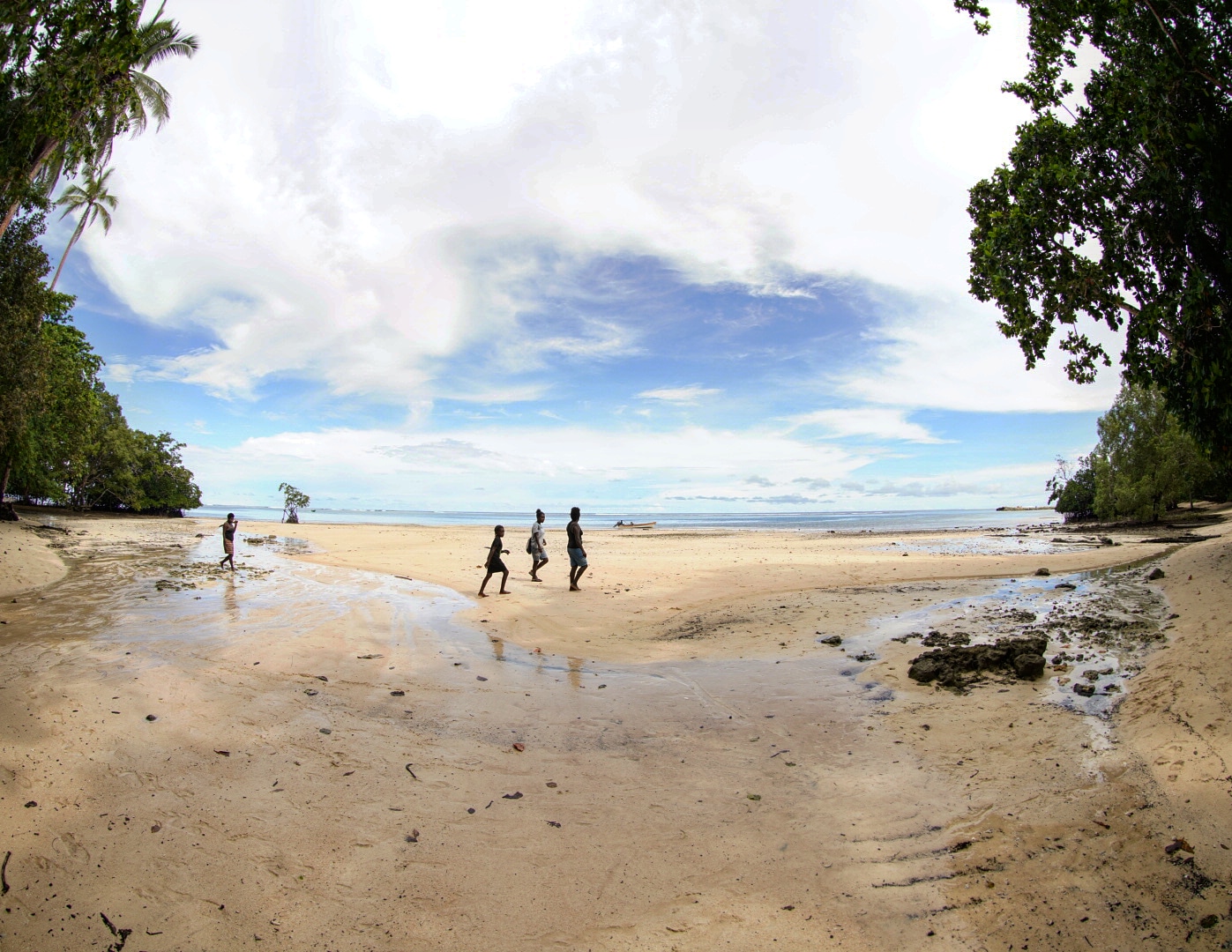
Beach on a remote island where fishermen claim coelacanth catches
When the rest of the team arrived we met up and were taken to the liveaboard, a large roomy craft, specialized to support SCUBA divers with comfortable airconditioned cabins and a galley producing tasty meals.
There was some local press coverage, which I stayed clear of, as we all settled in and introductions were made. Meeting a dozen or more new people at once takes some adjustment, and to be honest a number of days before you're clear on names and who everybody is. Even by the end of the trip, two weeks later, I dont think everybody knew our first names. The technical divers who already knew each other well, stayed more or less to themselves. They talked tech shop most of the time, and when specimens of fish were brought up, the latin binomials flew fast and furious- I once commented I felt like I was in Ancient Rome. We hung with the reef survey and nautilus people, and the Solomon Islanders tended to keep to themselves and sit at their own table. Only at the daily evening beer, soda and snack get togethers on the top deck, was there general mixing, or after dinner with presentations or the day's underwater video being shown in the main lounge.
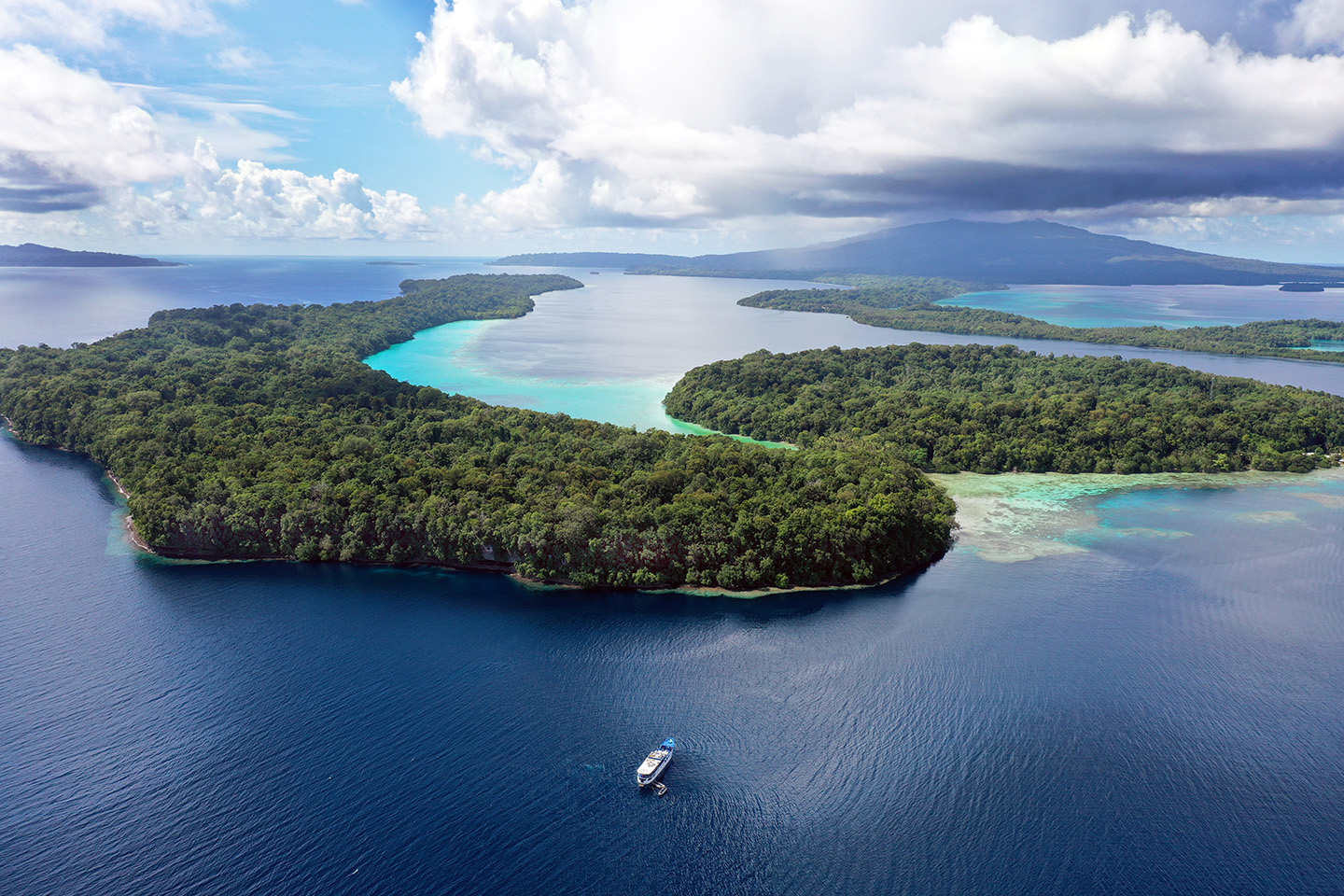
Spectacular Marovo Lagoon, a possible home of coelacanths?
The ship moved to new locations every day. Two very capable managers were on top of everything. The moorings followed a general pattern that the boat used on every outing, as arrangements existed with the islanders in those locations. But there were adjustments for the different scientific groups. A place would be decided for the nautilus traps to be put down for the overnight. Not far away would be the reef that the survey group would visit using conventional SCUBA gear. The technical dive team would have chosen the point on a given reef at which they would go down for the mesophotic sampling. Each of these three activities were coordinated afresh each day.
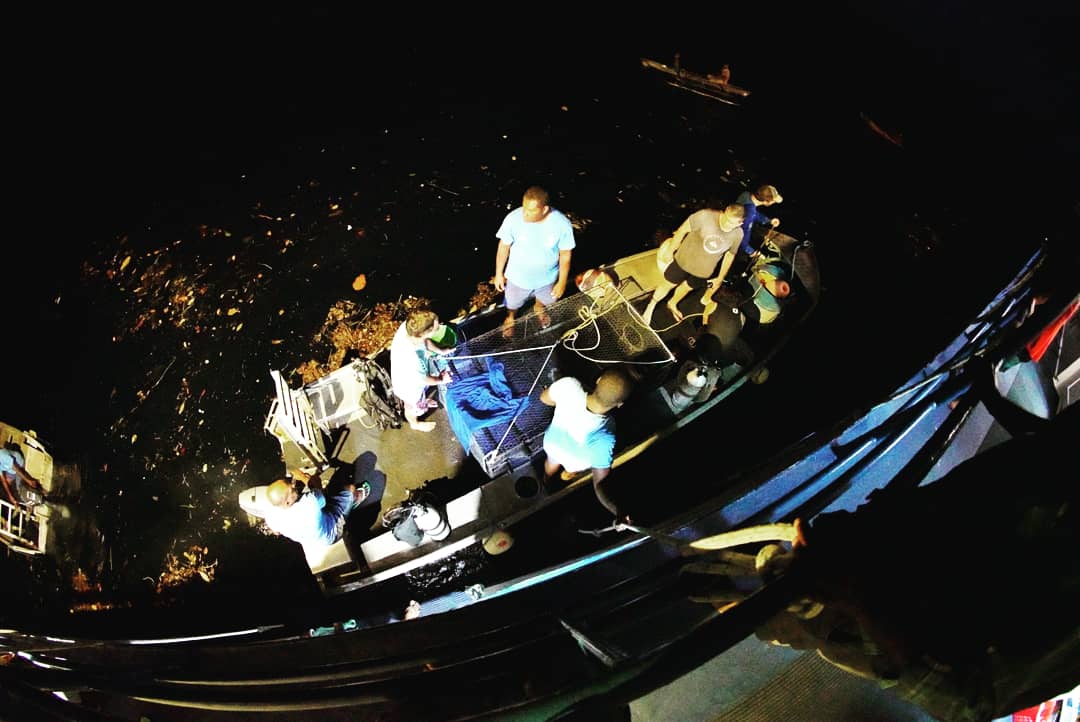
A nautilus trap is mobilized for a night setting in one of the "tinnies," small towed outboards.
Diana and I had no specific duties. She did a little SCUBA and snorkeling. I snorkeled only once the entire trip. Instead, I flew my drone, of which there were several also brought by the others. I talked to Dave Abott, the professional cameran and diver who was hired to cover the expedition. And I practiced with a small ROV I had brought along. (It turned out there was no large one.) My ROV, a Fifish V6 was highly maneuverable and showed great promise, though it was limited to only a couple hundred feet depth. It also was difficult to know where it was in relation to me, the operator, once it was out of sight. The control screen had a compass icon that was not especially useful. I managed to wind the tether around the ships anchor, get the tether stuck on something on the ship's hull, and snag some coral when I ran it from one of the two small boats called tinnies that were towed behind the mothership. The tinnies were used for all excursions including the trap setting, the reef SCUBA groups, and the technical divers. Fortunately, I was able to recover it each time. I also took photos. I had the incredible new SONY A7Riv with me along with a good telephoto lens.
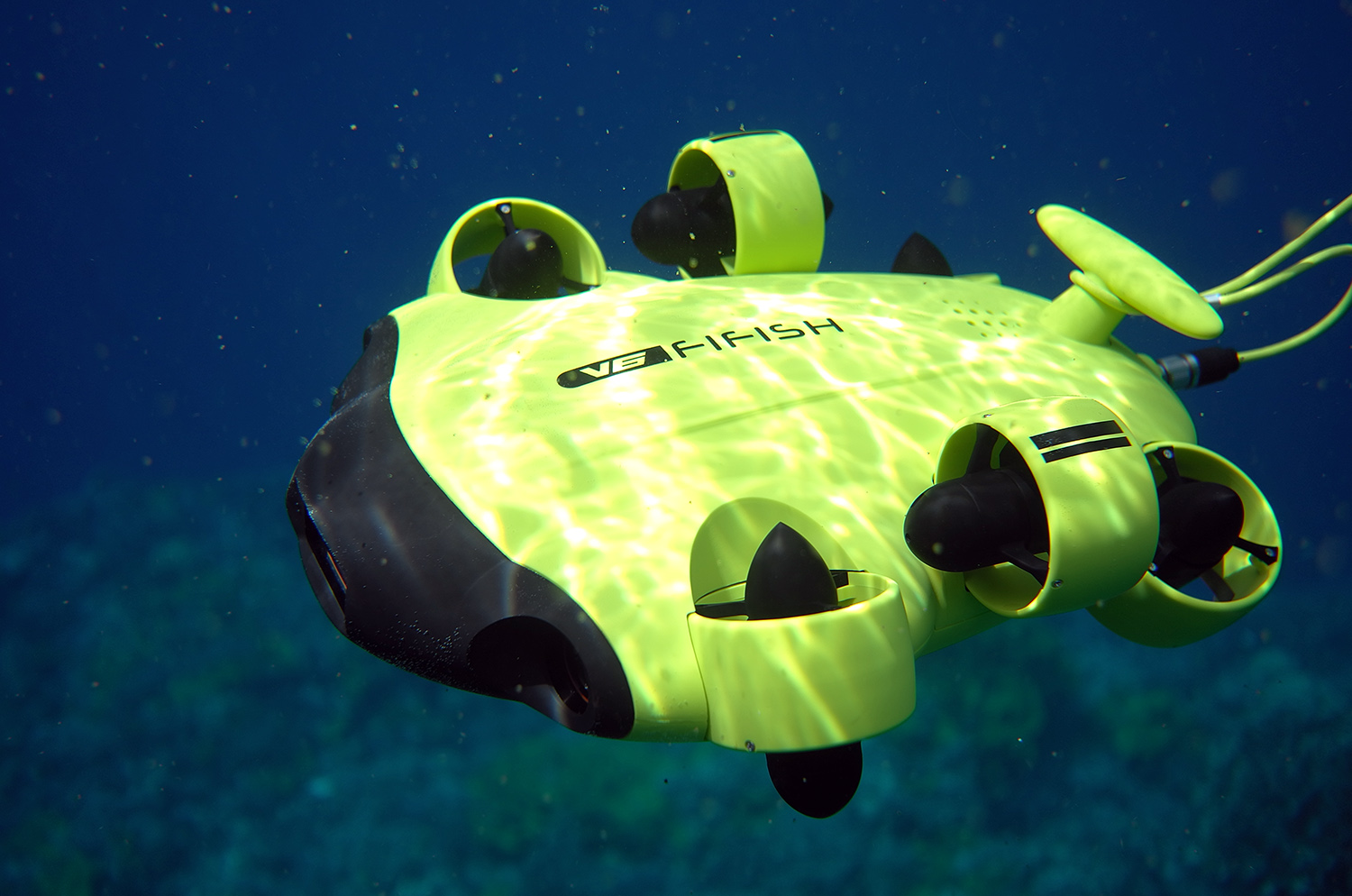
My Fifish V6 underwater in the Marovo Lagoon.
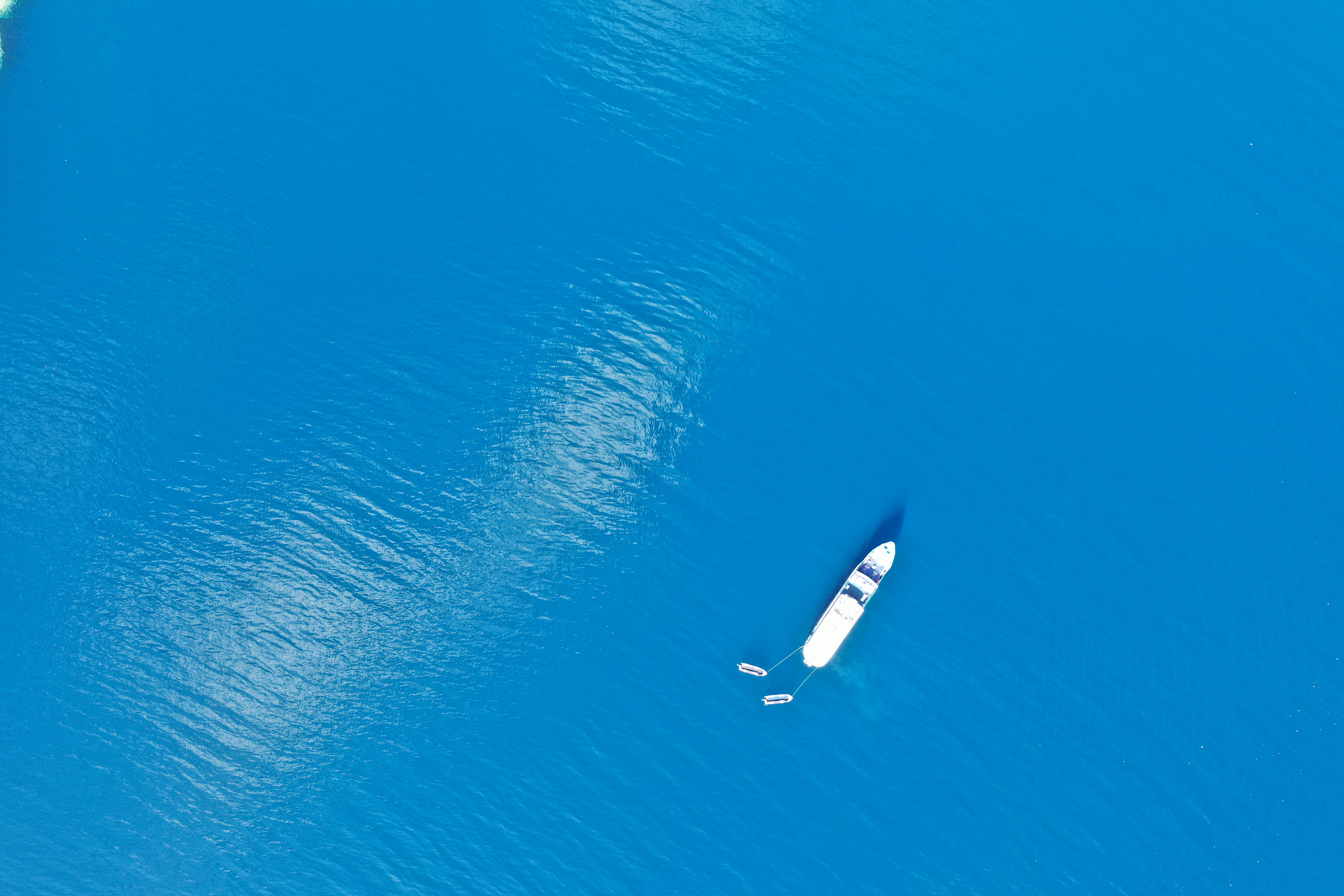 Alone on a sea of blue
Alone on a sea of blue

Villagers resupply the mothership with fresh fruit and vegetables
The reef group would return with their survey results and process them on laptops on the dining tables on the covered foredeck. The nautilus traps were brought in, the nautiluses removed in coolers, measured, sexed, then escorted back to the depths by SCUBA divers to spare them being attacked on the way down by sharks. The technical dives were the most complex of any of the operations. Using rebreathers allowed for going deep with less gear than open circuit SCUBA and with a gas mix minimizing nitrogen narcosis and decompression times. Essentially, each unit consisted of a breathing loop, a co2 scrubber and two tanks plus a bailout tank, all monitored by waterproofed computer modules. One tank was oxygen, but because oxygen is toxic to breath straight below a certain depth, the second tank, called the dilutent tank, contained other gases. One of these was helium, which because it is absorbed and vented from tissues more quickly than nitrogen made for less decompression time. But helium is expensive and also causes heat loss more rapidly than nitrogen, so it might in turn be diluted with nitrogen, oxygen, or simply air (a mix of nitrogen and oxygen). On the way down, the divers would also cache or stage a tank- the deco bottle- on the slope, that contained a mix suitible for decompressing with at that depth when they were ascending. The deco bottle would have a higher ozygen ratio to expedite outgassung of nitrogen from the bloodstream and thus reduce decompression time. This was a complicated process, so we tended to steer clear of the operations less we distract or mess things up.
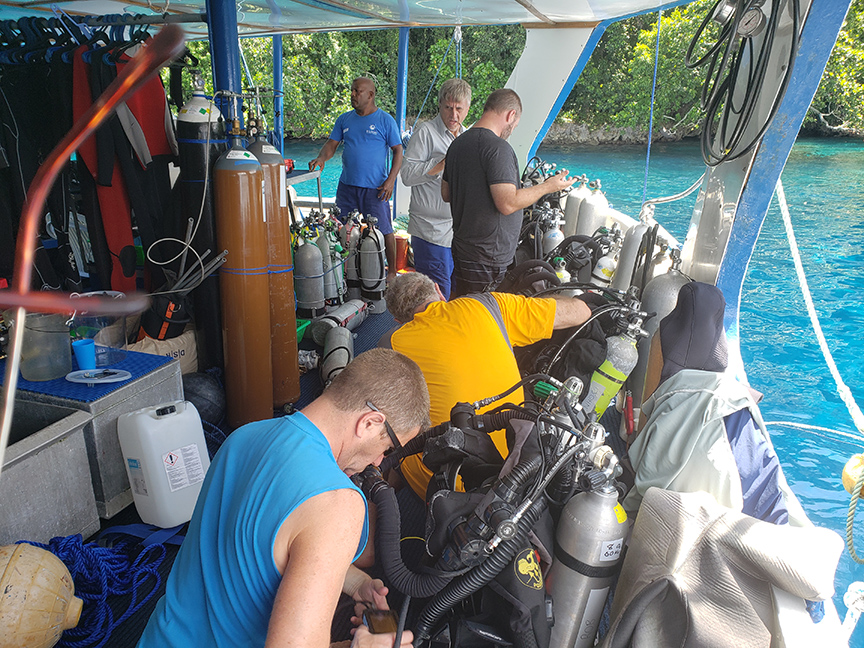
Tech divers Rich, Josh, John, and Rob (foreground) prep their gear.
Every day the dive team would go out (or maybe one member took the day off.) A "tinney" took them to their chosen site and waited. Some hours later they would return. I would ask how it was. Although they were excited about their finds, Richard would usually report that there was no thermocline and hence the temperature was too warm for coelacanths.
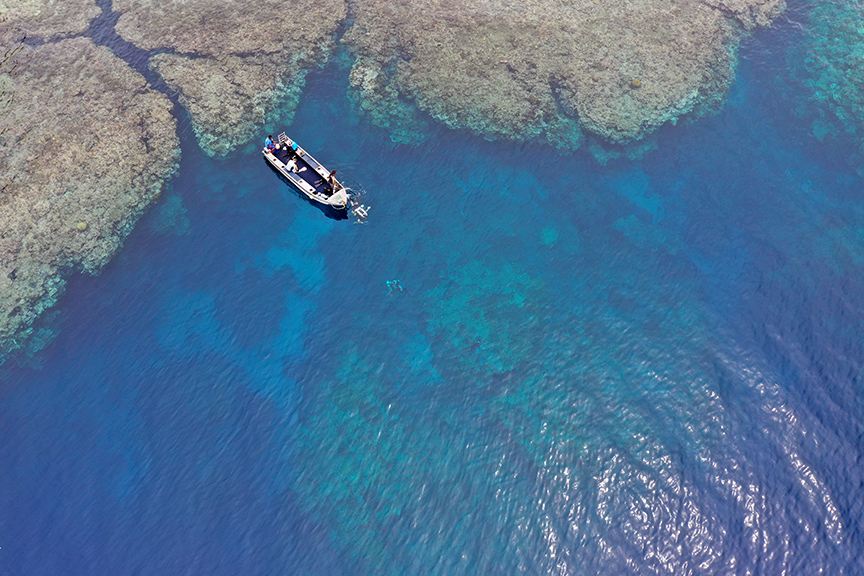
The tech divers begin a deep reef descent from a "tinny."
Eventually, in Marovo, we met the single fisherman who claimed he had caught two coelacanths, small ones he said. But he had caught them back in 1978! We went to the location just outside the lagoon. The next day the tech divers went down there. Nothing special. Fortunately, there was some positive excitement because the Nautilus team brought up a furry or crusty nautilus, not known to exist beyond Papua New Guinea. They measuered and photographed it.
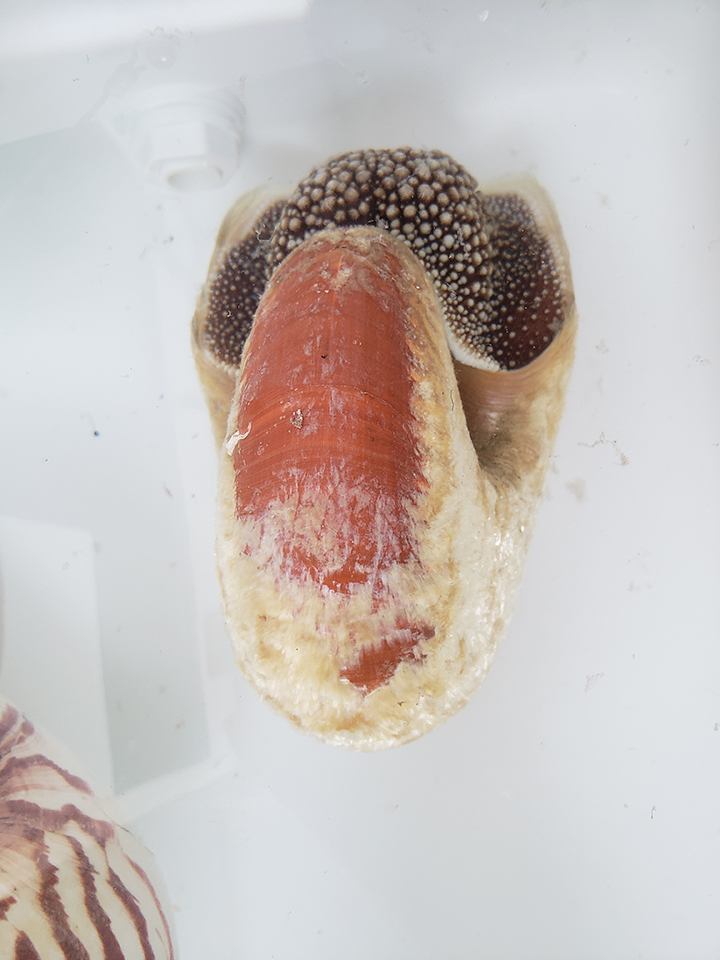
The crusty nautilus, Allonautilus scrobiculatus
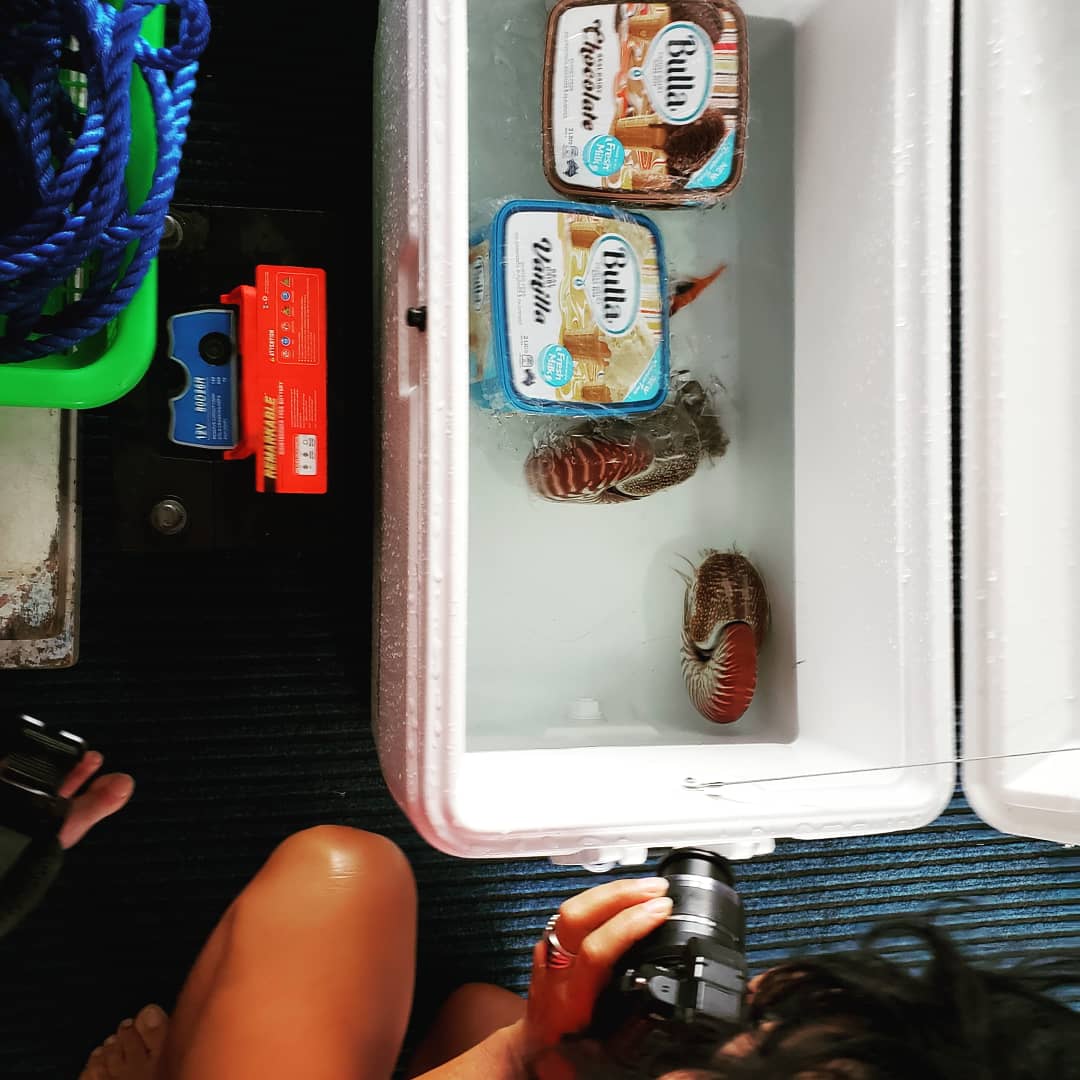
Nautilus pompilius (The common variety)
The tech team also believed they had sampled some new species, albeit of very small fish, so their mission was successful. And the reef group, who had been repeating a survey done some years earlier, seemed happy that they had further evidence of the deliterious effects of climate change. We all bought carvings from the excellent carvers of Marovo, who remembered Diana and mysef from previous visits, and asked "Are you still looking for that fish?"

Sample fishes collected by the deep diving tech team.

The mothership moored to the coast with two "tinnies"next to it.
On the homeswing, with just a few days left we dropped anchor at Mary's island. Next morning, Diana went snorkeling. I was practicing with my ROV, when Josh and Brian looked over my shoulder. "I'm gonna have to get me one of those." said Josh in mock hillbilly. "When they are tetherless," added Brian, adding, "That's going to be a while!" In a bit, the tech divers went out, but not far, in a "tinney," having selected their site.
I went down below for a rest because I hadn't slept well the night before. When I came up, I could see the "tinney" out there aways and it looked like someone, one of the managers, was doing CPR on somebody in the boat. I got that sinking feeling in the bottom of my stomach. One of the reef researchers came by and was watching. The CPR stopped. We thought that was a good sign. But then it started again. This went on for what seemed like a very long time, at least twenty minutes.
Then the other "tinney" went out with someone else. The CPR continued. People were moving around the ship. I got my sat phone, but two others appeared. From the "tinney" coming back word was it was Josh. More CPR. Then they brought him back to the boat. More CPR on the dive deck. Calls. People taking turns. Deco buoys, slim inflated floats, had popped up indicating the positions of the other divers decompressing deep under water. (These are also called surface marker buoys or SMBs.) We were told that Richard had brought Josh to the surface and handed him off to the Solomon attendant in the boat with the manager. If so Richard had risked an embolism and severe bends doing the rapid ascent. Richard had gone back down to complete a normal decompression. Josh never revived and probably had been gone from the beginning.The other divers came back on board including Richard who lay down to see how he was.
Richard then got back in the water for a bit just to be sure of his decompression. A helicopter would not be possible until we reached the next island group, and not today. The helicopter pilot was on a commercial flight into the Solomons. A DAN operator advised to cease the CPR. People were in an oddly combined state of shock and adrenalin rush. There was a lot of talking.
Josh had been at just over 200ft when he signaled distress. Richard swam to him but it was already too late. He had expelled his mouth piece and his jaws were clinched shut. Richard brought him up. All that was presumed before the expedition broke up was that Josh had drowned when his oxygen shut down, possibly due to a faulty control cable. We were asked to the dining area and to please eat something. Willie Atu, one of our Solomon science reps, who was also a pastor said some words which helped. The ship ran through the night to make port at Honiara in the early morning, where an ambulance was waiting to take Josh. The crew had cleaned him up and wrapped him respectfully. We were all somewhere between stunned and agitated. Some were talking a lot, others sitting, listening. This was something no one was expecting. The trip had been so beautiful up to then.

Dolphins on a sea of silver
As there were a couple days left on the ship schedule before the flights, and many arrangements to be made, some of us on board went on the van tour of the military battlefields of Guadalcanal that the boat managers organized for us. That was a meaningful way to get some perspective on the sacrifices that Americans and Japanese, and Solomon Islanders had made in these waters and among these islands. At least it gave me a sense of calm, and a broader vision of life.
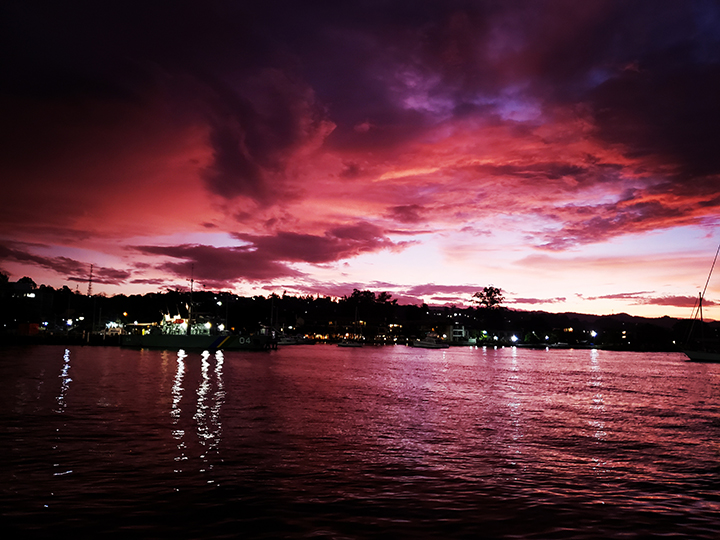
Iron Bottom Sound, site of the greatest US Naval defeat in history.
Diana and I stayed on after the others left the Solomons, in hopes of visiting other islands, but the deteriorating weather made local flying impossible. We departed internationnally via a few days in Fiji, where I again used the I.D. sheets on the island of Bequa. No takers. We returned to New York, and soon the pandemic, which knocked Diana out of comission for at least seven weeks. But in the meantime, I began to get unusual messages from the Comoros.

A Fijian Firewalker stepping onto superheated rocks.
Video Feature: My ROV approaches a sea fan almost 200 ft down in the Marovo Lagoon.
Video Feature: The tech divers deploy to explore a reef dropoff.
